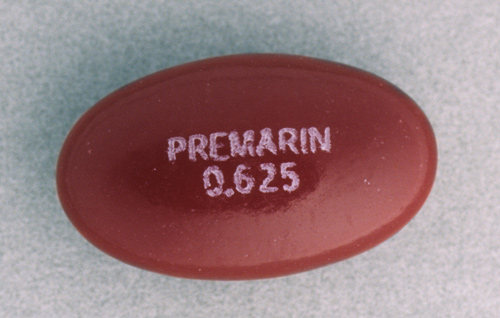
BEERS REMS
Contraindicated in:
Thromboembolic disease (e.g., deep vein thrombosis [DVT], pulmonary embolism [PE], MI, stroke)
;Undiagnosed vaginal bleeding
;History of breast cancer
;History of estrogen-dependent cancer
;Protein C, protein S, or antithrombin deficiency or other thrombophilic disorder
;Use Cautiously in:
Long-term use (more than 4–5 yr); may ↑ risk of MI, stroke, invasive breast cancer, PE, DVT, and dementia in postmenopausal women
;Underlying cardiovascular disease
;(Systemic use)
CV: edema, hypertension, DVT, MI
Derm: acne, oily skin, pigmentation, urticaria
Endo: gynecomastia (men), hyperglycemia
F and E: hypercalcemia
GI: nausea, anorexia, jaundice, vomiting
GU: womenamenorrhea, breakthrough bleeding, breast tenderness, dysmenorrhea, cervical erosion, loss of libido, vaginal candidiasis, menerectile dysfunction, testicular atrophy
MS: leg cramps
Neuro: headache,
dementia
, depression, dizziness, insomnia, lethargy, STROKEResp: PE
Misc: ANAPHYLAXIS, ANGIOEDEMA, MALIGNANCY (BREAST, ENDOMETRIAL, OVARIAN)
Drug-drug:
Drug-Food:
Estrogens should be used in the lowest doses for the shortest period of time consistent with desired therapeutic outcome. Concurrent use of progestin is recommended during cyclical therapy to ↓ the risk of endometrial carcinoma in patients with an intact uterus.
Ovariectomy, Primary Ovarian Failure
Osteoporosis/Menopausal Symptoms
Female Hypogonadism
Inoperable Breast Carcinoma—Men and Postmenopausal Women
Inoperable Prostate Carcinoma
Uterine Bleeding
Atrophic Vaginitis
Moderate to Severe Dyspareunia
Absorption: Well absorbed after oral administration. Readily absorbed through skin and mucous membranes. IV administration results in complete bioavailability.
Distribution: Widely distributed to tissues.
Half-Life: Unknown.
| ROUTE | ONSET | PEAK | DURATION |
|---|---|---|---|
| PO | rapid | unknown | 24 hr |
| IM | delayed | unknown | 6–12 hr |
| IV | rapid | unknown | 6–12 hr |
‡Tumor response may take several wk.
Inform postmenopausal women that long-term use may ↑ risk of MI, stroke, invasive breast cancer, PE, DVT, and dementia.
Advise patient to report signs and symptoms of thromboembolic disorders (pain, swelling, tenderness in extremities, headache, chest pain, blurred vision).
Emphasize the importance of routine follow-up physical exams, including BP check; breast, abdomen, and pelvic examinations; Papanicolaou smears every 6–12 mo; and mammogram every 12 mo or as directed. Health care provider will evaluate possibility of discontinuing medication every 3–6 mo. If on continuous (not cyclical) therapy or without concurrent progestins, endometrial biopsy may be recommended, if uterus is intact.
NDC Code